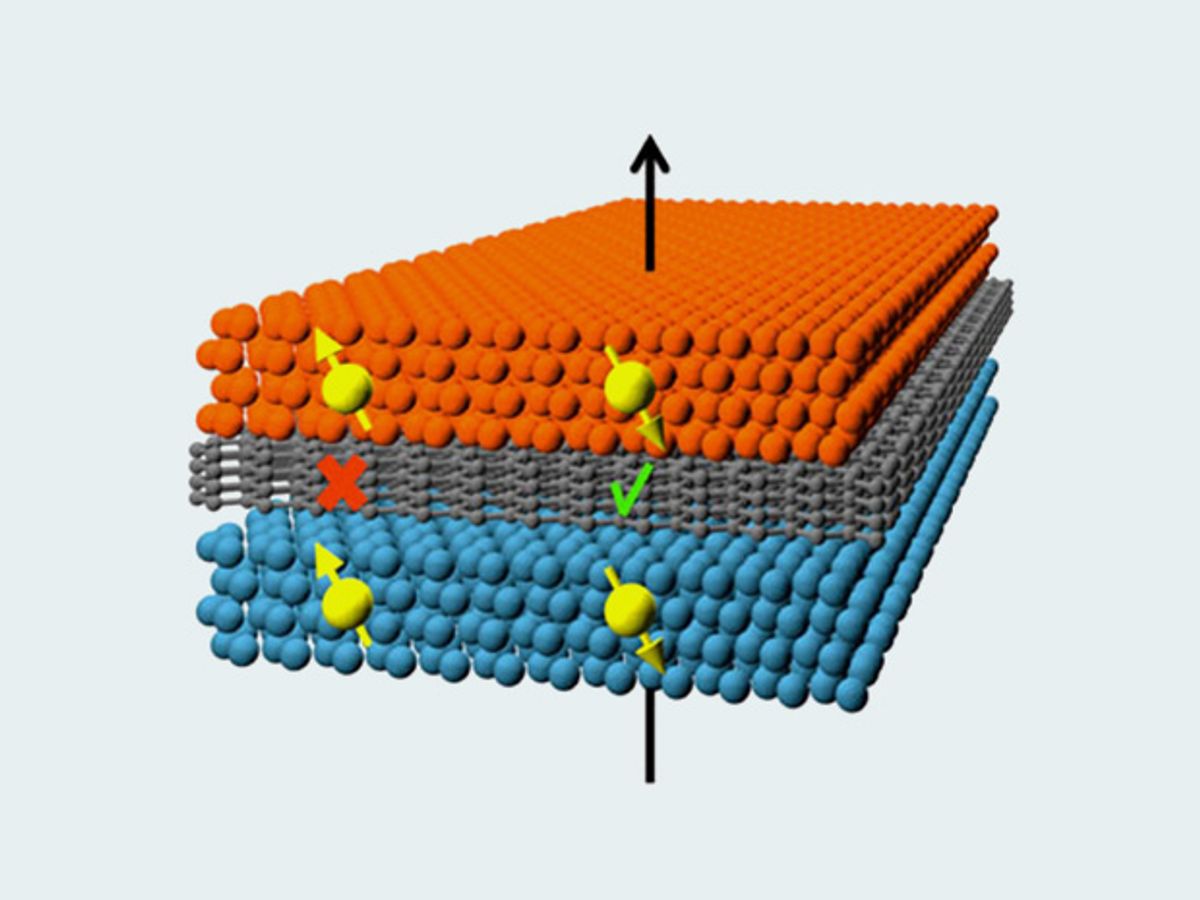Graphene has had an unusual history in the world of spintronics where the intrinsic spin of an electron is used to encode information rather than its charge. At first, graphene was dismissed in these applications because when it is laid out flat, the spin of the electrons is unaffected and their direction remains random rather than patterned. But a host of research projects changed this idea when results indicated a great deal of possible uses for graphene in spintronic applications.
The latest research comes from a team at the Naval Research Laboratory (NRL) in which a layer of graphene is placed between layers of nickel and iron. The layering creates the first thin-film junction device capable of spin filtering at room temperature. The results could be a boon for next-generation magnetic random access memory (MRAM) in which spin-polarized pulses flip a magnetic bit from 0 to 1 and back again.
Spin filtering is a phenomenon that makes it possible to get highly spin-polarized charge carriers. Essentially, the device acts as a kind of filter that only allows an electron with one type of spin to pass through while the other is blocked. This ensures that the up and down polarization of the electrons are distinct from each other, making the “0” and “1” of digital logic.
In this layered architecture, the spin filtering phenomenon is the result of an interaction of the quantum mechanical properties of graphene with those of a crystalline nickel film. When the nickel and graphene layers are aligned, only electrons with one specific spin are able to transfer from one material to the other.
“The spin filtering had been theoretically predicted and previously seen only for high-resistance structures at cryogenic temperatures,” said Dr. Enrique Cobas, principal investigator, NRL Materials Science and Technology Division, in a press release. “The new results confirm the effect works at room temperature with very low resistance in arrays of multiple devices.”
In research described in the journal ACS Nano, the NRL researchers were looking to investigate the conductivity of stacked graphene sheets and how they would interact with other materials. To do this, the NRL team created a new way to grow large multi-layer graphene films directly on a smooth, crystalline nickel alloy film. The process they came up with managed to retain the nickel alloy film’s magnetic properties, so that they could then pattern the film into arrays of cross-bar junctions.
“There is room for improvement, as theory suggests the effect can be increased by an order of magnitude by fine-tuning the number of graphene layers,” said Dr. Olaf van ‘t Erve, research scientist, NRL Materials Science and Technology Division, in a press release. “However, current models do not include the spin-conversion that happens inside the ferromagnetic contacts. Once we account for those effects, we’re already close to the ideal case of 100 percent spin polarization in the graphene layer, enabling us to revise our device geometry and materials to maximize the effect.”
Dexter Johnson is a contributing editor at IEEE Spectrum, with a focus on nanotechnology.



